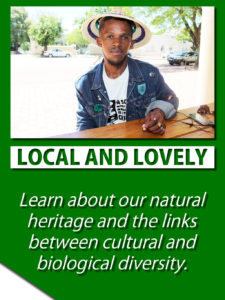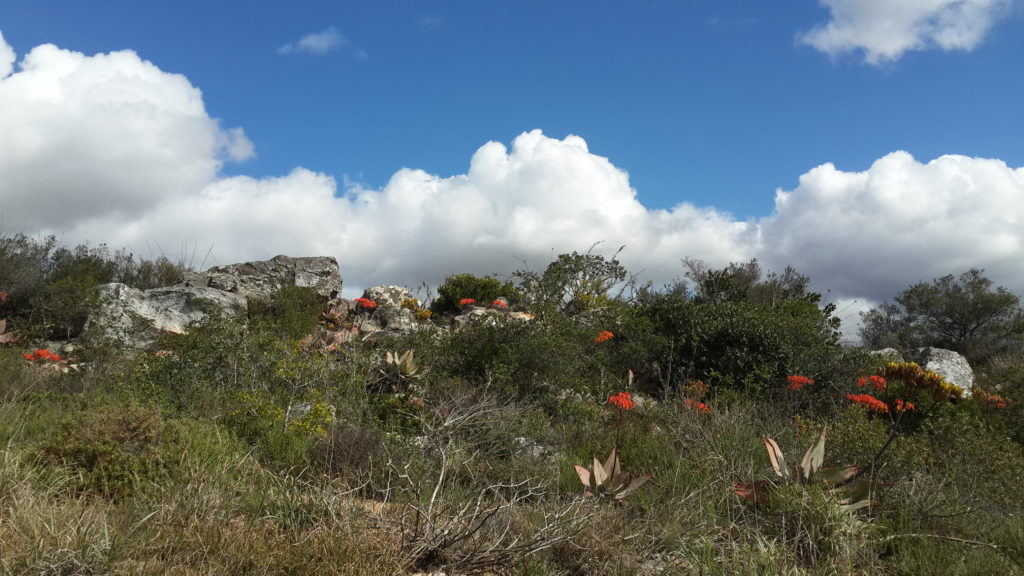Name: Tecomaria capensis (Thunb.) Spach.
Common names:
English Cape Honeysuckle
Afrikaans Kaapse Kanferfoelie, Trompetters
Xhosa Icakatha, Umsilingi
Popular garden and hedging plant, deciduous in cold areas.
Description
Scrambling shrub or small tree up to 6 m. Leaves opposite, compound, 2-4 pairs of leaflets; margins blunt
toothed. Flowers in terminal inflorescences, trumpet-shaped, upper petal lobe, orange-red, pale orange
(throughout year). Fruit slander and flattened. There are several colour varieties, including a lighter orange and a pale yellow form which is slower growing.
Conservation status
According to the SANBI (South African National Biodiversity Institute) Red list of South African Plants, Tecomaria capensis was not selected in any one of four screening processes for highlighting potential taxa of conservation concern for detailed assessment and was hence given an automated status of Least Concern (L.C.). http://redlist.sanbi.org
Distribution and habitat
The Cape Honeysuckle occurs in thicket, on forest margins through southern eastern and eastern South and tropical Africa.
Provincial distribution: Eastern Cape, KwaZulu-Natal, Limpopo, Mpumalanga and Western Cape.
Derivation of name and historical aspects
Tecoma (Aztec name for plant Tecomaxochit) – Scandent shrubs in Africa we have ± 4 species, here in South
Africa we have 1. Contradition of the Mexican name Tecomaxachiditi for 1 species. Tecomaria = like the genus Tecoma, and capensis = from the Cape. William Burchell collected specimens at Port Alfred in the Bathurst District at the beginning of the nineteenth century, Mr Bowie sent seeds to Kew in the year 1823, and plants that flowered there were figured in The Botanical Register in 1827.
Ecology
Browsed by game and stock. Visited by sunbirds, butterflies, honey-bees. The larvae of the death’s head
hawkmoth (Acherontia atropos) and the fulvous hawkmoth (Coelonia mauritii) eat the leaves of this plant.
Uses and cultural aspects
Used in traditional medicine to treat fever, pain, sleeplessness, chest ailments, dysentery and to encourage flow of milk in feeding mothers. In the past nursing mothers (abadlezana) wore a close-fitting charm necklet called isixhoxho through the breastfeeding period as a protective amulet for both mother and child. Although the concept remains the same, the practice has changed overtime and today the most commonly used wood for isixhoxho is that of Cape honeysuckle, its earliest recorded use being in 1929. Although the necklet still has a symbolic protective function, it is worn only at social functions during the first two years after the child’s birth as an indication of the mother’s social status. The wood is carved into cylindrical pendants and strung together, side by side, with a few blue and white beads threaded between each spacers. Izixhoxho (plural) are made by mothers themselves and may be handed down from mother to daughters.
Growing Tecomaria capensis
Plant Tecomaria capensis in well-drained soil with a good mix of compost and fertiliser, mulch well and water regularly until established. Reduce water if water is scarce. Prune back in later winter to encourage new growth and flowering. To grow Tecomaria as a self-standing shrub it needs to be cut or pinched back regularly, and all ground hugging shoots be removed. http://bit.ly/GrocCapensis
References and further reading
Batten, A. & Bokelmann. H. 2011. Wild Flowers of the Eastern Cape Province. 1966. Books of Africa, 1005 Cape of Goodhope Savings Bank Building, St. George’s Street, Cape Town.
Dold, T., Cocks, M. 2012. Voices from the Forest, Celebrating Nature and Culture in Xhosaland. Jacana Media, Sunnyside, Auckland Park, South Africa.
Pooley, E. 2005. A Field Guide to Wild Flowers, KwaZulu-Natal and the Eastern Region. The Flora Publications Trust, c/o Natal Herbarium, Botanical Gardens Road, Durban 4001.
http://www.grocotts.co.za/2018/03/19/traditions-to-treasure/


